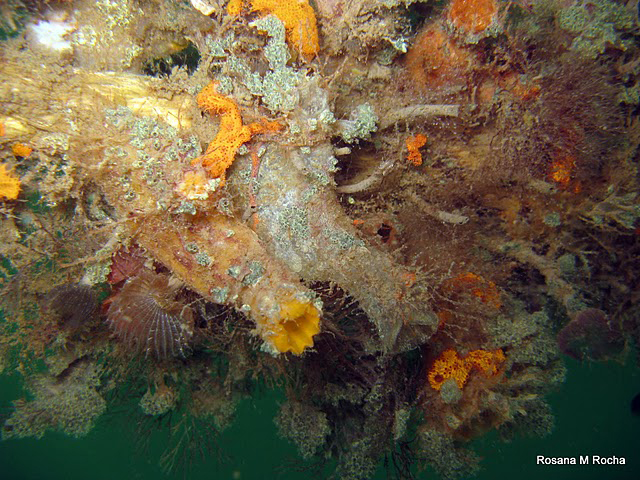by Kristen Minogue

A mangrove tree crab eats a beetle larva. (Candy Feller / Smithsonian Environmental Research Center)
It’s happening in the mangrove forests of Panama and Belize. With the vast array of plant-eaters in the canopy, biologists once thought the tropics would be a danger zone for mangroves. But SERC ecologist Candy Feller discovered something unexpected. After tracking mangroves in Panama, Belize and Florida in a study published this June, her team found that mangroves were actually safer from hungry herbivores in the tropics.
It turns out one species threatens mangroves more than any other: the mangrove tree crab, Aratus pisonii. And in the steamy Central American forests, something else seems to be eating them.
Mangroves thrive in warm tropical and subtropical shores from Brazil to northern Florida. Their tangled above-ground roots make them hard to navigate, but they’re beloved for protecting shorelines and sheltering fish, crabs and other small sea creatures. To get a sense of how vulnerable they were to herbivores, Feller’s team looked at leaf damage. Contrary to all expectations, Florida’s mangroves suffered the most. Leaf damage was two times higher in Florida than in Panama, and three to four times higher than in Belize.
Mangrove tree crabs inflicted the most damage in all three locales. Though technically omnivores, leaves of the red mangrove make up more than 80 percent of their diet, according to analyses of their gut contents. The crabs were also most abundant in Florida—and all the extra herbivores and omnivores in the tropics couldn’t fill the vacuum as their numbers dropped farther south.
Some kind of predator—or several—is probably keeping mangrove tree crabs down in the tropics. But exactly what remains a mystery.
Feller suspects that whatever is eating the crabs, it’s getting them young. Mangrove tree crabs have a high infant mortality rate. On average only .04 percent of larvae survive to become juveniles, and only 17 percent of those become adults. Crab larvae are a popular food for many creatures, including zooplankton, small fish and anemones. By preying on immature crabs, these tiny predators are unwittingly protecting the mangrove trees.
A varied supply of predators doesn’t just protect plants. In a second study published in June, Greg Ruiz and his former postdoc Amy Freestone discovered they have another power—the power to ward off invasive species.

Ascidia sydneiensis, an invasive tunicate common in the waters of Panama. (Rosana M. Rocha / Universidade Federal do Paraná)
In Connecticut predators had little impact. With the exception of one species (Ascidiella aspera), invasive tunicates thrived even without the protection of cages. But in Panama, the unseen predators cut down or completely excluded invaders in all but one of their experiments. Overall the predators in Panama were three times better than their New England counterparts at keeping the tunicates from spreading.
These predators are among the world’s smallest, a far cry from sharks, lions, cheetahs and other famous carnivores. They operate under the water and under the radar. But close to the Equator, ecologists think their sheer numbers and the diversity in their ranks have made them a force to be reckoned with.
Photo Gallery: The Beautiful World of Sea Squirts

